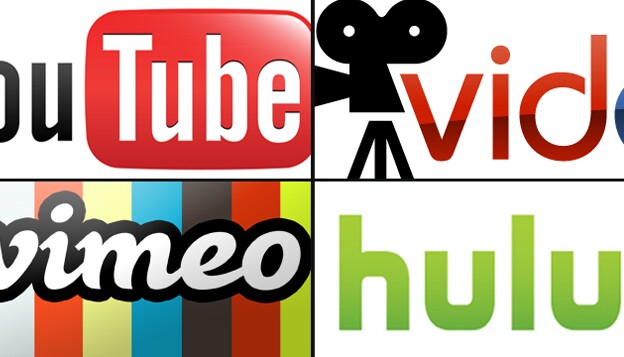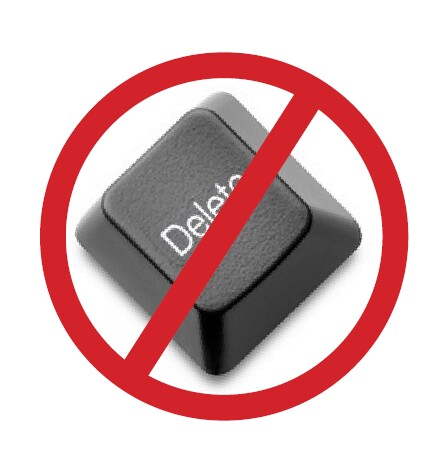We had a client call last week telling us that she had received a letter from someone stating how much they were put off by an ad we were running. She was wondering if we should hold off running that ad and instead run another one we had produced. My response was “Heck no. I’m thrilled that someone felt that way. I hope we get a few more letters.” Why would I say that, right?
You see, your company, like 99.9% (there’s always that oddball out there) wants to be loved. You want adoring customers, enthusiastic vendors, committed partners, etc. Yet in reality, few companies are really appreciated. In fact, most companies and marketing messages are tolerated at best, and at worst, ignored. And do you know why? It’s because most company messaging is too forgettable and too dull to spark any type of reaction.
If you want your company to have passionate customers, dedicated partners, etc., you must first inspire strong responses. Only then can you convince people to love your company and become raving fans of your brand. But here’s the kicker: as you attract fans, you’re also bound to get the critics, or “Haters.” As we learned in physics: Every action creates an equal and opposite reaction. These Haters are the ones that write nasty letters or post negative comments on sites like Yelp or Angie’s list. That said, here’s something which might also cause you to recoil a bit. Experience has taught me that it’s OK to have some not like your brand (not a lot, of course). Yup, you heard me right. In fact, having a few critics is essential. The undeniable reality is that if you’re not eliciting a negative response from someone somewhere, then you’re probably not that fascinating to anyone. No one remembers lukewarm!
Fresh, imaginative, and original ideas come across as unfamiliar, even uncomfortable, which means that not everyone will like it. But unfortunately, most companies spend too much time worrying over damage control for the Haters that they never get up the nerve to be exceptional in the first place. In short, Haters are the price one pays for being special. Apple has Haters. Starbucks has Haters. Accept their presence but do not let them stop you from moving forward.
On the other hand you have the advocates, evangelists, loyalist…the Lovers. They don’t just buy your product or service, they also accept price increases and forgive occasional “issues.” When your product is sold out in one store, they’ll drive to another store to find it. When the competition tries to appeal to them with an incentive, they stay loyal. Lovers also do your marketing work for you — for free. They write nice things in online reviews, and even occasionally re-post your content online. In every aspect of your company, Lovers will reward you with new business and higher sales. They’re not just buying your products for price or utility.
So you now have the Lovers on the left and the Haters on the right and between them you have a set of customers who give you little loyalty or value. Let’s call this group the “Lukewarmers”. Maybe a good way of describing this group is like that friend of yours that would come over to watch a game but as soon as the beer ran out…so would he. Kind of like a friend…but not really. In the same way, these indifferent customers make a purchase here and there but don’t add much of anything else.
The Lukewarmers also have a really bad habit of not caring. They won’t buy your product unless it’s the cheapest or most convenient option which means they’re only buying you until a cheaper or more convenient alternative comes around. So in addition to not being loyal, they’re also expensive to maintain because you’re spending money to get them as customers and they never really pay out over multiple purchases.
In today’s marketplace, this middle ground is death!! Not caring is not buying. Not caring is inaction. The Lukewarmers leave for just the smallest of reasons. So how do you get people to quit being Lukewarmers and start actively choosing you and your brand?
Simply put, if your company wants to influence purchase decisions, you need to provoke strong and immediate emotional reactions so that people bond with your brand or company. The goal isn’t to create, or even stay away from controversy, but to avoid creating legions of people who simply don’t care.
The world is not changed by people who sort of care or don’t care at all. Stop focusing on the Lukewarmer. And don’t let the Haters keep you from your goals. Start accumulating the Lovers. And it all starts by having your marketing and advertising being original and captivating. There’s no middle ground here.
 It happened to us again. We were working with a client, taking them five steps forward when without warning, they took six steps back. They went fleeing from the banks of the Promised Land back to where their advertising wasn’t producing maximum results, but at least it was “safe” and nobody in management would complain.
It happened to us again. We were working with a client, taking them five steps forward when without warning, they took six steps back. They went fleeing from the banks of the Promised Land back to where their advertising wasn’t producing maximum results, but at least it was “safe” and nobody in management would complain.
Holy smokes, they were almost there, with a new campaign that would cut through the clutter like a hot knife through butter. Instead, they opted for the same direction they’ve always followed. We don’t take it personally. We’ve worked with this client for a number of years, and we really like the people. But each year, we pray this time maybe they’ll take the path less traveled and finally move their brand from a me-too to a me-only! And then the bugle blows, “Retreat, retreat!”
There’s an old saying: “The devil you know is better than the devil you don’t.” I hate that saying. I hate that is pardons marketers from being exceptional. It only contributes to the soggy, bland mess that fills 95.6% of the available ad space. It makes people hate advertising and love the fast-forward button on their DVRs.
I have a challenge for you if you’re the one responsible for advertising at your company. Pick up the next five magazines you encounter, go through each one and tear out the ads that really stop you, that speak to you on some gut level, that make you salivate for the product. I don’t care if they’re ads for panty hose, shaving cream or body bags, just as long as you love the ads. Tear out the ads and put them in a folder. Then the next time you have an ad to create for your company, pull out those ads and see if these don’t inspire you to do better. And the moment you feel the need to retreat, look at those ads again for inspiration to boldly stand apart and be noticed.
It may help you to remember that they’re the ones that caught your attention while you ignored the other 95.6% which lost their respective companies lots of money in production and media expense.
We say, again and again, Dare to be Different. Maybe it would be better if we said, Dare not to be invisible. Dare not to retreat into marketing nothingness. Dare not to do what everybody else does and blend into the background by your own choice.
We Dare ya.
 I saw a video over the holidays and it got the better of me so much so that I have to say something because these types of videos just need to stop being created by “marketers.”
I saw a video over the holidays and it got the better of me so much so that I have to say something because these types of videos just need to stop being created by “marketers.”
I’m talking about poorly conceived and produced online videos that we find on countless company websites and social media channels which are completely ineffectual. You know the kind of video I’m talking about: it starts off looking like it was homemade and it never gets better; the on-camera ‘talent’ has none; it doesn’t know when to end; there’s an information overload going on which leads to boredom; no clear understanding of who the audience is; and most importantly, the “WOW factor” is completely hidden or missing.
Unfortunately, this is exactly what some companies have haphazardly slapped together in the name of “meaningful content video.”
As we all know, online video content has just exploded over the past couple of years and it’s going to keep getting bigger in the foreseeable future. For example, did you know….
Yet we still have too many companies that create and post videos which are visual train-wrecks that unfortunately their customers and prospective customers will see. With that in mind, and so that the next video you develop has a chance to be all that it can be, let’s talk about what good videos have in common:
So whether you’re creating a testimonial, promotional, “how-to” or other type of video, the idea is to make sure that people find it interesting, worth spending the time to watch and that it leads to the desired next step. Repeated viewings of your video generally indicates a positive overall experience. Repeatedly having your video, or future videos, being ignored means, well, you know what that means.
 A friend and I were watching a football game on TV when a commercial came on for a paint retailer. At the end of the commercial, my friend said “I don’t trust them for a minute. They don’t look or sound the part at all.” I started thinking about why some companies are trusted and others aren’t. And so I’ll pose the question to you: in today’s marketplace, with people not wanting to be sold to but rather base their purchase decision on many other factors, is your company better off just selling products and services or selling trust along with your products?
A friend and I were watching a football game on TV when a commercial came on for a paint retailer. At the end of the commercial, my friend said “I don’t trust them for a minute. They don’t look or sound the part at all.” I started thinking about why some companies are trusted and others aren’t. And so I’ll pose the question to you: in today’s marketplace, with people not wanting to be sold to but rather base their purchase decision on many other factors, is your company better off just selling products and services or selling trust along with your products?
One of the greatest demonstrations of selling trust came about years ago when Chrysler Corporation was being dragged back from the brink of extinction by its then CEO, Lee Iacocca. Chrysler was seen as having a flawed product and not to be trusted to build a good car. Lesser men would have resorted to selling at the cheapest price with giant discounts and 0% interest. They would have also gone down with the ship by making futile arguments about the features/benefits of the cars. Iacocca rejected this thinking and instead sold his personal guarantee…his promise…by saying “If you can find a better car, buy it.”
So then, what are the few key factors that will make your business such a trusted and relied-on presence in your customers’ lives that they will stay with you – and spend with you – for many, many years?
As I write this, virtually every advertiser, marketer and seller struggles in an un-trusting world. The public has very, very, scorched fingers and badly-bruised confidence. The temptation to overcome this mistrust with stronger product pitches, cheaper prices or deeply discounted fees – did I mention, cheaper prices – is enormous. And dangerous. To do so worsens the fundamental problem of low trust and deprives you of the finances needed to effectively market at all.
Unfortunately, and we all see it in our personal and business lives, there are bunches of companies out there who are “hit and runners.” They’re more in the business of getting customers to make sales rather than making sales to get customers. The first provides only income. The second provides income and equity. It’s sort of like the difference between dating and a long-term marriage. It’s about being there and having the other person’s back. That the other knows you care about them. That you find ways to stay interesting and relevant over the years. Sad but true, most marketers don’t really think about a long-term marriage with customers. They take it for granted or give it no importance. They’re focused on income not equity. Like you, I buy things from stores or service providers where not even a feeble attempt at creating an ongoing relationship is made. I think the thinking is “We did OK, he’ll be back.” Well, maybe and then again maybe not.
So, what can companies do from a marketing standpoint to start the process of building trust within the minds of their current and prospective customers? Here are eight thought-starters:
So, while we as marketers understand that we’re in the business of helping drive revenue for the company among other challenges, let’s not lose track of the fact that it’s always easier to derive sales from an existing customer versus that of a new customer. And that only happens if they trust you. And they’ll only trust you if you look and act the part. Don’t have your company be a “poser”…you’ll be found out!
by Rolf Gutknecht, Agent of Change (c) 2012
A friend of mine sent me a video by email last week that, as a marketer, I loved. It was one of those ‘old school’ videos featuring “America’s best salesman”…Elmer Wheeler, who’s message is as relevant and meaningful today as it was when he delivered in the 60’s. After watching it a number of times, and because of the subject matter, it made me think of an interesting way to look at what the brand experience is all about.
[youtube=http://www.youtube.com/watch?v=UW6HmQ1QVMw]
So here goes:
Imagine that you and your significant other decide to go to a well-known, fancy-schmancy steakhouse for a special night out dinner. Have that in your mind? Good. Now, picture another steakhouse of similar reputation. Both of the steakhouses prepare the same quality of steak but with one difference….. whereas the first restaurant makes a steak the way it’s supposed to be made (a thick clean cut, placed on the center of the plate) and presented with some tasty vegetables nicely positioned on the side and professionally put on the table, the second restaurant has a similar plate presentation but with no steak on it. Their steak gets delivered just a minute later on a hot stone tablet to your table…simmering and sizzling. The waitress presents the steak with elegance, and sprinkles some salt and pepper on top. While the aroma of the steak makes your mouth start to water and the sizzle gets your full attention, she begins to tell the story of the family who own the vineyard of the wine you selected. What a different brand experience that is! Same item, same quality, different way to engage the consumer. The difference isn’t about the steak but rather about the sizzle.
So why does the “sizzle” matter?
1. Anyone can make good steak
As we know, product or service quality is a fragile thing. No matter how many patents you have, how well you have integrated your supply chain and perfected your quality standards, no matter how much money you spend on R&D, anyone who really, really wants to go after you will eventually copy what you do or make and perhaps even perfect the product you so passionately protected.
2. The sizzle is a difficult thing to copy
Branding, brand equity and brand engagement are difficult to copy. They are strongly linked to your brand, and your brand alone. The depth of everything “surrounding” the product is complex, deep and interwoven with stories, emotions, associations, you name it…all those good things that make a brand unique!
3. The sizzle adds the emotional layer
Back to the restaurant example: Guess what? People will come back for more. Not just for the steak, but for the feeling they get when they are IN that experience. Human beings thrive on emotions, and seek repeat of pleasure.
Now, I’m not suggesting for one minute to only focus on the sizzle. Without that good, juicy, perfectly cut and excellently cooked filet mignon steak there is no reason to add sizzle in the first place! The sizzle is the icing on the cake; without cake there is no need for the icing.
Selling the sizzle and not the steak is something good marketers have known since forever. Give your customers the meal that they desire…and they will come back for it time and time again.
by Rolf Gutknecht, Agent of Change (c) 2012
I’m not sure about you, but in the deluge of emails that comes my way each and every day, it’s real easy start deleting them without even thinking about whether there’s content that might make my life and that of my clients easier and better. So, I stopped doing that about  6 months ago and now take the time to open each one and at the very least scan for interesting info. Maybe I’ll see something about trends, or research data, facts, or a tidbit about helpful hints. Without doing so, I’d miss out on stuff I should know about and, respectfully said, that’s probably the case with you as well.
6 months ago and now take the time to open each one and at the very least scan for interesting info. Maybe I’ll see something about trends, or research data, facts, or a tidbit about helpful hints. Without doing so, I’d miss out on stuff I should know about and, respectfully said, that’s probably the case with you as well.
Well, with your indulgence, I wanted to share with you 10 pieces of information that you may not be aware of which in turn will help you grow your business by seizing on untapped revenue-producing opportunities. So, here goes:
As I said, it’s easy to delete a bunch of good information that comes your way because of time constraints, being short staffed or being overwhelmed with email after email. But this is all good information that I received and looked over before I hit the delete key. If you’ve read this far, you’ve made the same thoughtful decision as well.
by Rolf Gutknecht, Agent of Change (c) 2012
I had a phone conversation with a prospective new client (I’ll name her Amelia) last week and during our talk, I mentioned having seen a cable TV ad that her company had run recently and was wondering if it had produced growth in sales inquiries or better yet, generated more sales. Her response is something that I’ve heard more times than “Doan’s has pills.”
Amelia reported less-than-stellar performance, which didn’t really surprise me. But she fingered the blame on the media type…and not the marketing process or the message. The spot was flat-out boring and crammed with too many feature points. The message itself had no spark; the ad employed uninspiring, overused stock images that everyone has seen on other companies’ commercials; and while it had a lot of words attached to it, it said nothing. I know you know the kind of ad. You see them every day in trade publications, direct mail, online and yes, even on TV.
When I politely asked her if maybe it wasn’t the media but the message, my suggestion was immediately dismissed as “no, no. that’s not it. Cable just doesn’t work.” In this case it was TV but I’ve heard it for most every B2B and B2C media type there is. So I quoted to her legendary adman Bill Bernbach’s “golden rule”: “The truth isn’t the truth until people believe you, and they can’t believe you if they don’t know what you’re saying, and they can’t know what you’re saying if they don’t listen to you, and they won’t listen to you if you’re not interesting, and you won’t be interesting unless you say things imaginatively, originally, freshly.”
Now before I move on, please take another 15 seconds and read the above quote again and let it wash over you…it’s that important.
You see, what this timeless observation says applies to everything a marketing executive does in communicating a brand’s promise or a product’s sales message, and then needs to shine through like a huge Klieg light within your ads, your sales support material, your promotional initiatives, your tradeshow booth, your collateral and your website.
Taking the uninspired or predictable way out leads to self-inflicted mediocrity which we all know is like a communicable disease. It starts with a so-so idea and coupled with a lack of interestingness and imagination, it infects every aspect of your marketing to the point that regardless of how and where you present the message, your current and prospective customers will not give it two seconds of thought as it passes by, only to become part of the background noise and clutter.
I’m not sure about you but one of the main reasons I decided that advertising and marketing was what I wanted to pursue as a profession was because I loved coming up with marketing ideas that would make people sit up and take notice in a sea of indifference.
If you want your marketing to actually change the trajectory of sales, if you want yourself to be seen as an idea person rather than a “fulfiller” of marketing stuff, then the status quo is not an option. You need to create new truths for your company that people believe in because you say things “imaginatively, originally, freshly.” To do otherwise, especially in today’s economy, is unacceptable.